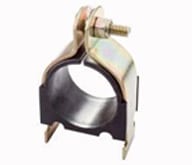 Nearly 70% of all manufacturers have some form of air compression system installed somewhere in their facilities. They could be used for all manner of things, mostly to assist in production, but one fact always remains the same: air compressors are loud. Incredibly loud.
Nearly 70% of all manufacturers have some form of air compression system installed somewhere in their facilities. They could be used for all manner of things, mostly to assist in production, but one fact always remains the same: air compressors are loud. Incredibly loud.
Loud things can be a distraction at work or an irritation, sometimes even leading to headaches and slow loss of hearing. You want to mute the system how ever you can to save your employees frustration and potential hearing problems.
Here are some ways that you can either mute or mitigate, the sound of an air compressor at your work:
Strut Cushion Clamps
Strut cushion clamps can be fitted on air compressor pipes to help absorb shock and vibrations, which reduced unwanted noise and prevents a slow corrosion from repeated vibrations. They can fit any standard 1-5/8" strut channel, and have interlocked edges and a channel locator legs that help ensure the cushion remains in place.
These are good for locations that have a lot of pipes, especially if those pipes have a tendency to rattle.
Hearing Protection
This may seem like a common sense thing, but there are still plenty of manufacturers that don’t make them part of the standard gear for their employees. Hearing protection at all times should be mandatory to avoid hearing damage, and also see a medical professional once and a while to see if damage has been done to the ears.
Create a Sound Barrier
Using a material like plywood to create an acoustic enclosure or sound barrier between the air compression system can also help dramatically reduce noise. You do have to keep in mind the amount of air required to cool the motor, and that you might need to access the compressor often.
You should design a sound barrier based on the size of the compressor and then widen it just enough to make it so you can work on it if need be.
Air compression systems are loud, but they can be handled with ease if you have the time, patience, and a solid plan. You should make sure that your work environment is one that doesn’t cause frustrations or health problems with your employees. The tips above are a great start to getting that setup.
